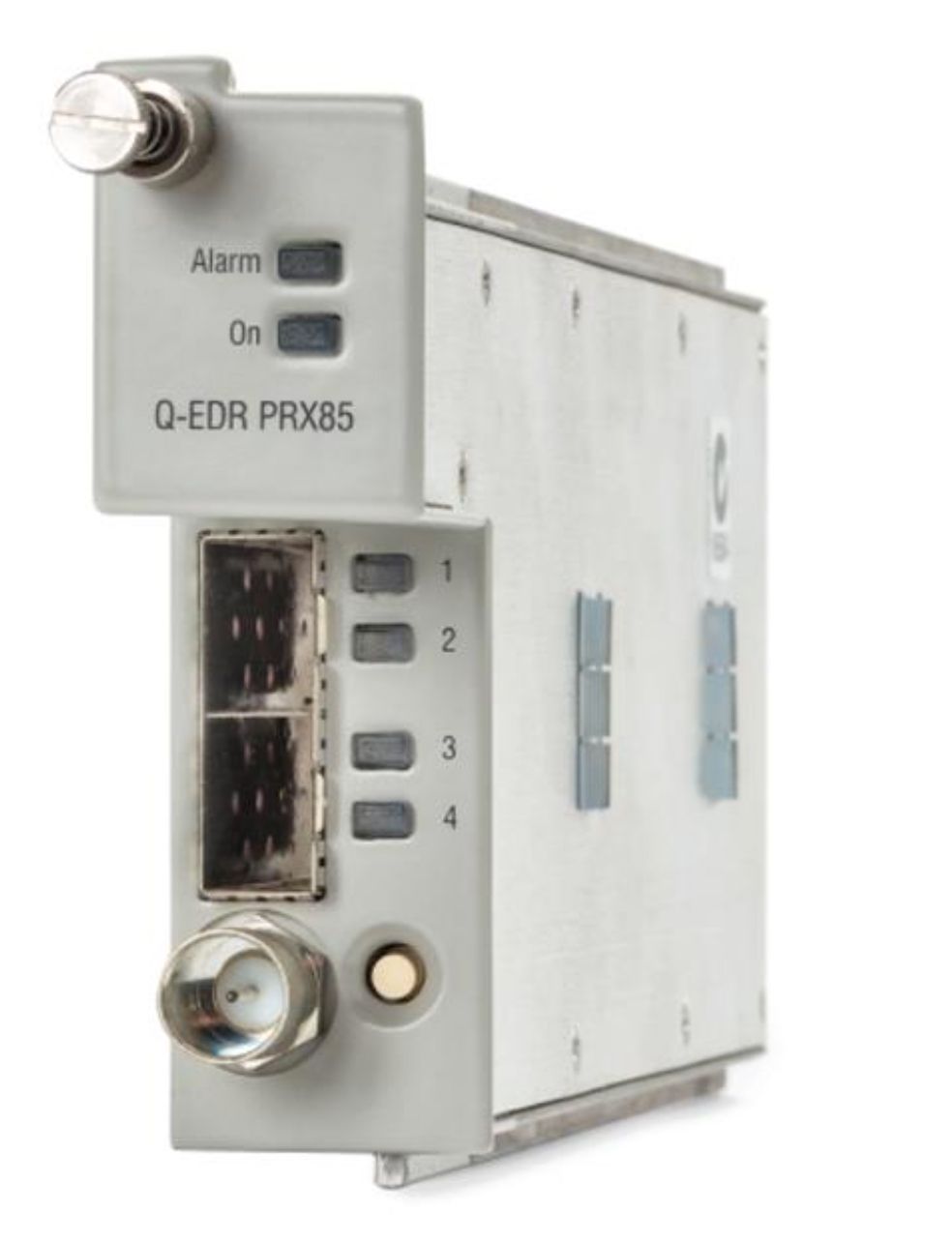Prisma II Enhanced Digital Return
The Cisco® Quad Optical Input Enhanced Digital Return (Q-EDR) 85 Receiver expands the Cisco PII EDR Receiver product line. This new Q-EDR receiver offers the superior performance of our dual EDR receiver and enables doubling the PII receiver density in digital return systems.
As with our Cisco Prisma® II Dual EDR Receiver, the Q-EDR receiver module works within the Cisco EDR 85 System. The Cisco EDR 85 System includes the existing EDR transmitter modules that install in GainMaker® and GS7000 nodes. It also includes the existing Cisco Prisma high-density (HD) Dual EDR PRX85 Receiver modules. Both the dual and quad optical input EDR receivers install in a Prisma II or Prisma II XD chassis at the headend or hub. The Q-EDR receiver uses the same Small Form-Factor Pluggable (SFP) optical pluggable modules (OPMs) as the dual EDR receivers. The Cisco EDR 85 System operates over the 5–85 MHz range and supports the standard reverse frequency bandwidths at 40, 42, 55, 65, and 85 MHz.
At the transmit (node) end of the system, reverse-path RF input signals from each node port are routed to an EDR 2:1 or EDR 1:1 transmitter module in the housing lid. The transmitter module converts each signal to a baseband digital data stream and combines the signals into a serial data stream using time-division multiplexing (TDM). The baseband data stream is then converted to an optical signal for transmission to the headend or hub. The double-wide (2:1) transmitter modules occupy two transmitter slots, and the 1:1 modules occupy one slot. The EDR 2:1 transmitter is available for the GS7000 and GainMaker 4-Port or Reverse Segmentable platforms (Figure 1). The EDR 1:1 transmitter is available for the GS7000 and all GainMaker node platforms. The transmitter OPMs are available in either coarse wavelength-division multiplexing (CWDM) 1270–1610 nm wavelengths or dense wavelength-division multiplexing (DWDM) channels (ITU 17–ITU 61).
產業新聞
Dec 16, 2025
Viavi Solutions Inc.
VIAVI Announces Share Exchange for $103.463 Million Aggregate Principal Amount of its 1.625% Convertible Senior Notes Due 2026
Dec 4, 2025
Viavi Solutions Inc.
VIAVI and QNu Labs Partner to Accelerate Quantum-Safe Network Security
Dec 4, 2025
Cisco Systems Inc.
OECD-Cisco research finds stark geographical and generational divides in AI uptake and digital well-being



